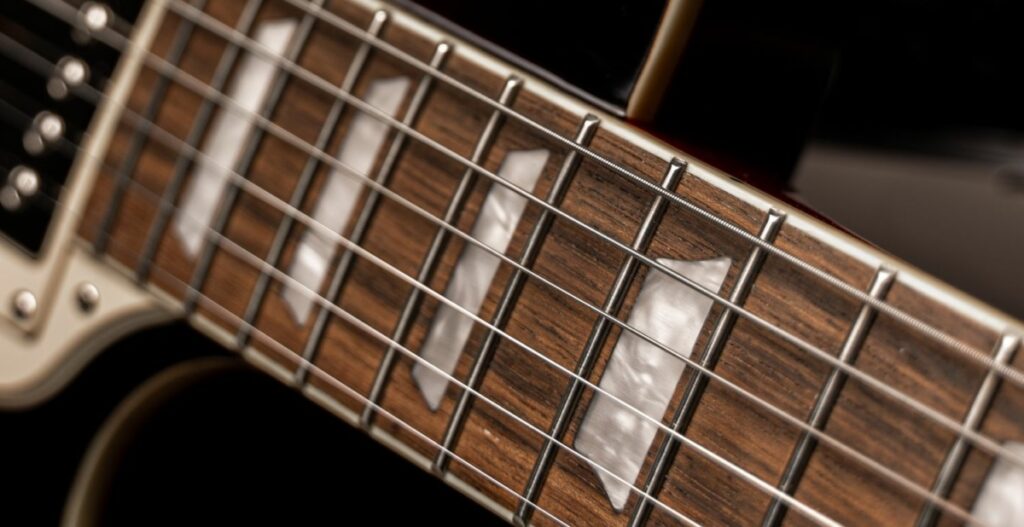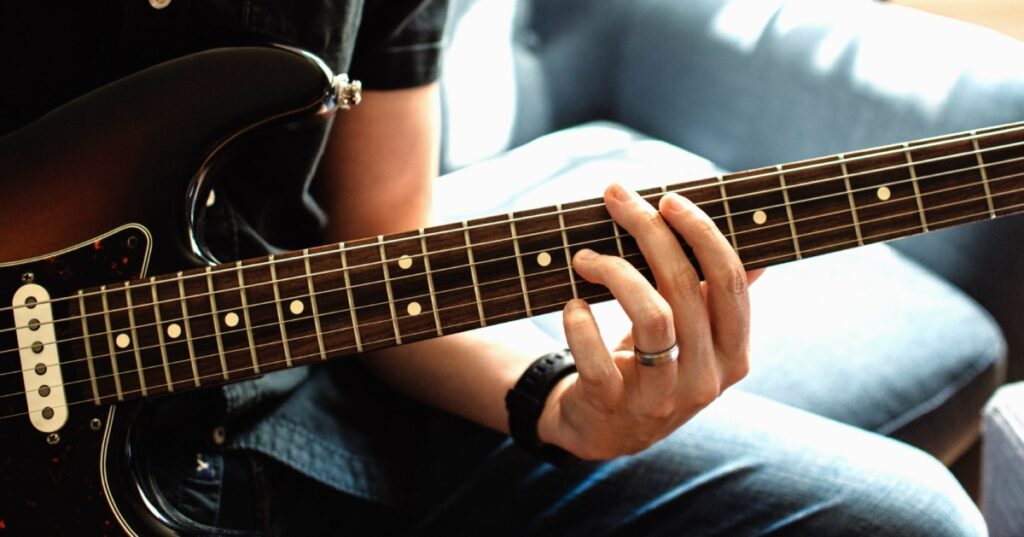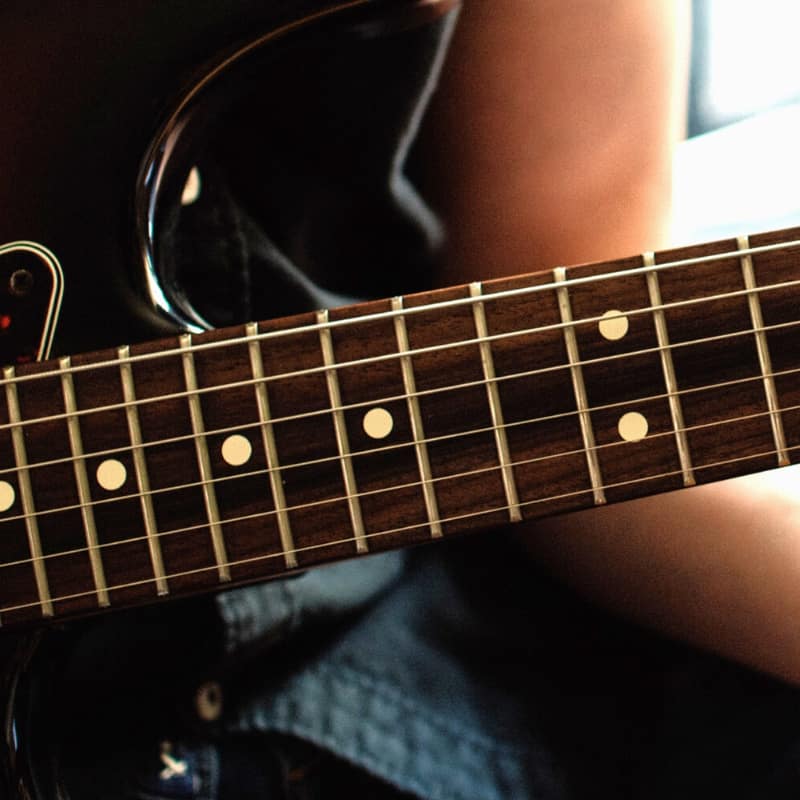Rosewood has been a stable choice of fingerboard wood for electric and acoustic guitars for a long time, but it has since become less popular due to import and export restrictions paving the way for other wood species, one of which is Indian laurel.
But what is the difference between Indian laurel and rosewood fretboards? In this article I’ll compare these two fretboard materials and the effect they have on the sound, feel and appearance of the guitar.
Rosewood vs Indian Laurel
Rosewood fretboards are more porous so feel rougher compared to Indian laurel fretboards. Visually, rosewood is darker and has more streaks compared to Indian laurel which has a more even appearance. Rosewood is naturally more oily so less prone to warping and requires less maintenance.
| Rosewood Fretboard | Indian Laurel Fretboard |
| Feels rougher | Feels smoother |
| Sound warmer with more sustain | Sound brighter and snappier |
| Darker with a more prominent grain | Lighter with a more even finish |
| Requires less maintenence | Requires more frequent oiling |
| Less prone to warping | More prone to warping |

Difference in Sound
Indian laurel fretboards are more dense which causes them to sound a touch brighter and snappier with a faster attack compared to rosewood fretboards which are more porous so sound warmer with more sustain.
If you play two electric guitars unplugged, back-to-back and they’re identical in every way apart from the fretboard, then you’ll be able to hear the difference. The same of course goes for acoustic guitars.
However, if you plug an electric guitar into an amp, the fingerboard wood makes little to no noticeable difference to the overall tone. This is because the pickups have a far greater effect on the tone and other less significant variables become much less important.
If you are comparing rosewood and Indian laurel fretboards on an electric guitar, I don’t think it’s worth factoring in the effect on sound into your decision. Instead, focus more on the feel and appearance as this is where the fretboard wood has more influence.

Difference in Feel
Indian laurel is both denser and harder compared to Indian rosewood which causes the fretboard woods to feel a bit different from one another.
Density:
- East Indian Rosewood = 800 kg/ m3
- Indian Laurel = 855 kg/ m3
Indian laurel fretboards feel smoother compared to rosewood fretboards. Indian laurel is denser which means it is not as porous as rosewood which has more gaps between the grains. The more porous nature of rosewood causes it to feel a bit rougher and creates more friction.
Some players prefer the feeling of a rosewood fretboard which feels grippier whereas others (particularly shredders) like the feeling of a smoother fretboard as it can feel faster to play on.
It’s worth noting though that the density of rosewood and laurel is fairly similar so there’s not as much difference in feel between them compared to say something like ebony which feels very smooth. That’s one of the reasons why Indian laurel is a good substitute for rosewood.
In terms of hardness, there is even little to separate these two fingerboard woods as evidenced by the Janka hardness scale.
Hardness:
- East Indian Rosewood = 2440 lbf
- Indian Laurel = 2340 lbf
Difference in Appearance
Rosewood and laurel are both darker woods so it can be difficult to tell them apart unless you are comparing two guitars side-by-side, in which case you’ll notice a few differences:
- Rosewood is slightly darker compared to Indian laurel
- Indian laurel has a more even appearance with fewer streaks compared to rosewood


Maintenance and Durability
Indian laurel is a drier wood compared to rosewood which means that it needs oiling slightly more frequently to keep it in good condition.
Since rosewood is more oily, it is less susceptible to warping due to humidity and temperature changes compared to Indian laurel. However, this should not be an issue with either woods provided that you store them in the proper conditions.
Since both of these fretboard woods are similar in terms of hardness, they are both similarly resistant to general wear and tear.
Popularity and Availability
Rosewood is typically only used on higher-end guitars as a fretboard wood because it is expensive to source.
The use of rosewood on guitars is has become less frequent due to restrictions placed in its export by the Convention of International Trade in Endangered Species of Wild Fauna and Flora (CITES) in 2017. This meant that it became more difficult and more expensive to use and other woods such as Indian laurel and pau ferro grew in popularity.
However, in 2019 some of the restrictions were lifted making rosewood a more viable choice once again. With that said, many mid-range and entry-level guitars continue to use Indian laurel fingerboards as the wood is cheaper.
Check out more fretboard wood comparisons:
